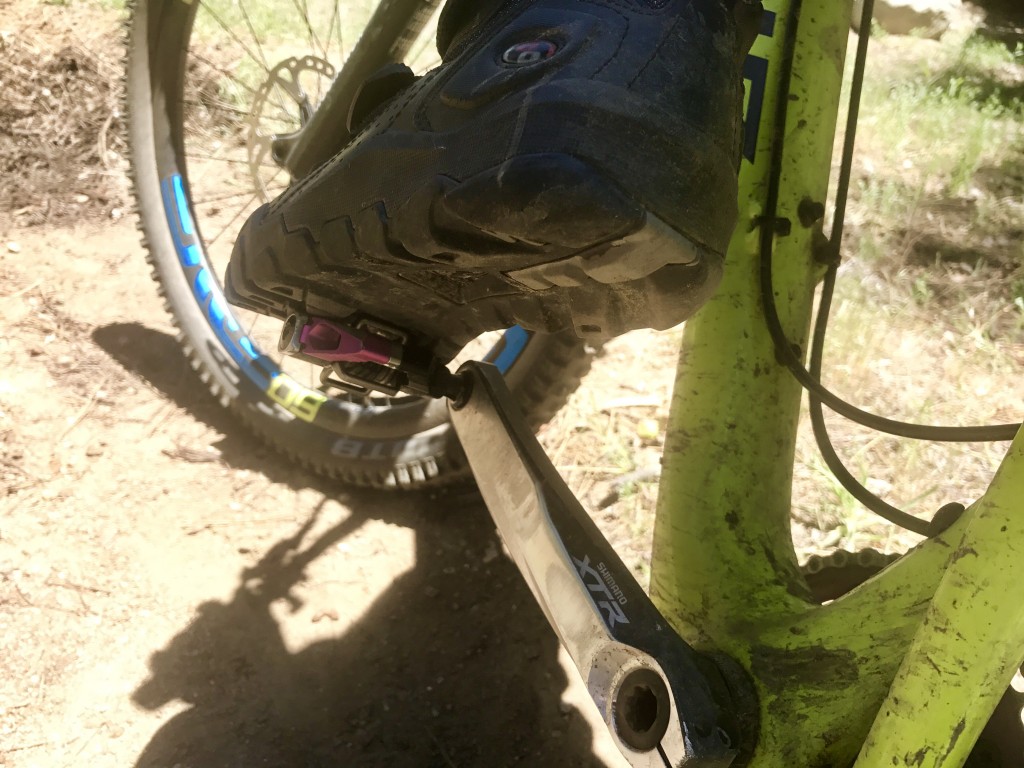How We Tested
To test these nineteen pairs of clipless mountain bike pedals, we rode in rain, sun, mud, sand, snow and perfect loamy single track. We tested in several different types of mud, ranging from coffee to Nutella. We rode them on hardtails, trail and enduro bikes using ten pairs of shoes with male and female testers. We swapped cleats countless times and got fast at moving pedals from one bike to another.
The shoes we used ranged from stiff cross-country racing shoes to freeride Five-tens. We took pedals apart, analyzed their components, counted bearings, and even used a microscope. We sent emails, called tech support, and pestered companies to provide us with more accurate information.
Ease of Entry
We clipped in, clicked in, kicked in, slid in, and rode these pedals for dozens of hours. Using a wide variety of the most popular cycling shoes on different riders in every conceivable condition. Each time we encountered an engagement anywhere shy of perfect, we took note.
Ease of Exit
We used static and real riding tests to evaluate the ease of exit. In general, there were only subtle differences in the pedals here, with a few notable exceptions. If the pedal induced panic or we fell over, we took note of its position and tried to determine the cause.
Adjustability
We noted three main attributes when considering adjustability — adjustability of the engagement mechanism, cleat options that changed the float or release, and accessories such as traction pads or grub pins that augmented the fit and feel of the pedal. Some pedals have little to no adjustability while others check every box.
Weight
We weighed each set of pedals with and without hardware and also weighed their cleats. We compared our weights with manufacturers stated weights; most pedals were close to their stated weight.
Platform
We measure each pedal's cage dimensions using calipers and measure the profile height from base to base directly over the pedal spindle. We also measured the Q-factor of each pedal using calipers, which is the distance between the flange of the spindle where it meets the crank arm and the center of the engagement mechanism.
Mud Shedding Ability
This is where we play in the mud, literally. We assess the performance in this metric using real-world riding conditions, but we also seek out the mud. When we're out testing, we'll purposely unclip in the mud, grind it into our cleats and test the pedals resilience to even our most contrived tactics.






